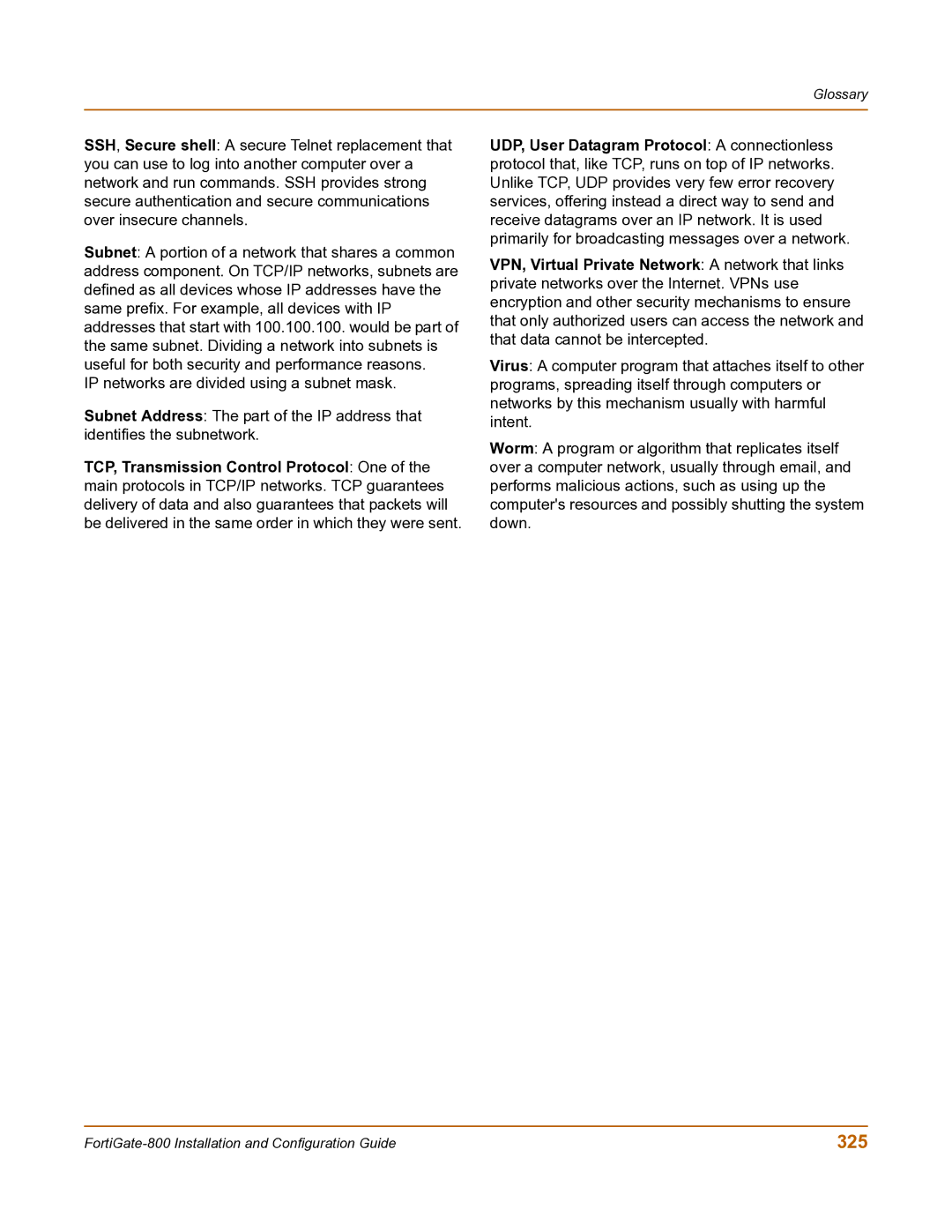
Glossary
SSH, Secure shell: A secure Telnet replacement that you can use to log into another computer over a network and run commands. SSH provides strong secure authentication and secure communications over insecure channels.
Subnet: A portion of a network that shares a common address component. On TCP/IP networks, subnets are defined as all devices whose IP addresses have the same prefix. For example, all devices with IP addresses that start with 100.100.100. would be part of the same subnet. Dividing a network into subnets is useful for both security and performance reasons.
IP networks are divided using a subnet mask.
Subnet Address: The part of the IP address that identifies the subnetwork.
TCP, Transmission Control Protocol: One of the main protocols in TCP/IP networks. TCP guarantees delivery of data and also guarantees that packets will be delivered in the same order in which they were sent.
UDP, User Datagram Protocol: A connectionless protocol that, like TCP, runs on top of IP networks. Unlike TCP, UDP provides very few error recovery services, offering instead a direct way to send and receive datagrams over an IP network. It is used primarily for broadcasting messages over a network.
VPN, Virtual Private Network: A network that links private networks over the Internet. VPNs use encryption and other security mechanisms to ensure that only authorized users can access the network and that data cannot be intercepted.
Virus: A computer program that attaches itself to other programs, spreading itself through computers or networks by this mechanism usually with harmful intent.
Worm: A program or algorithm that replicates itself over a computer network, usually through email, and performs malicious actions, such as using up the computer's resources and possibly shutting the system down.
325 |
